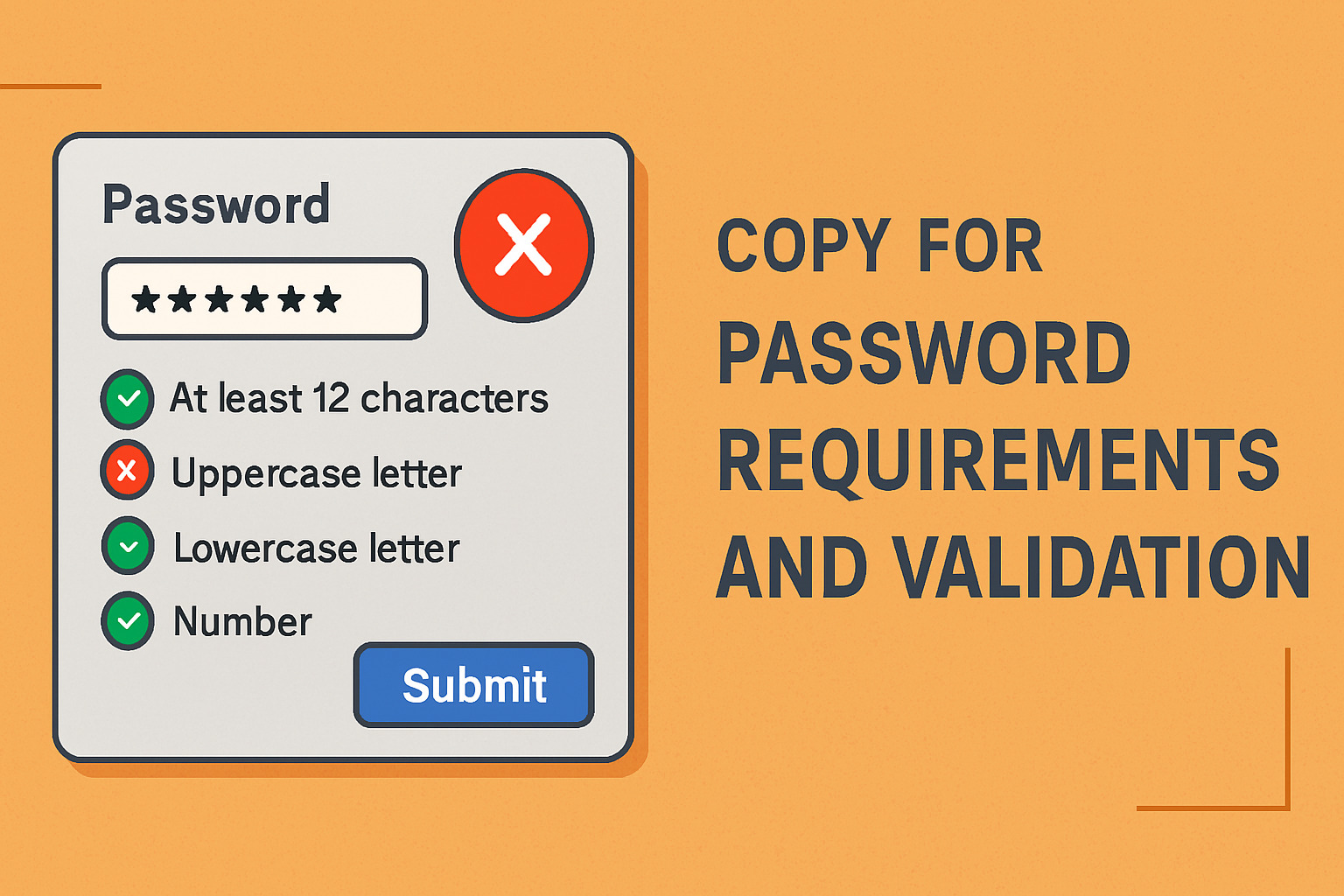Copy for Password Requirements and Validation

The increasing number of online accounts has raised the need for robust password systems that protect user data and maintain secure access. This article outlines the vital elements of password requirements and the processes behind validating credentials, offering clear guidelines that serve both users and system administrators.
Key Elements of Password Requirements
A well-defined password policy sets the stage for secure user authentication. To establish strong passwords, consider the following elements:
- Length: Set a minimum number of characters. Longer passwords tend to be more secure.
- Complexity: Require a mix of uppercase letters, lowercase letters, numbers, and special characters. This diversity limits the success rate of brute-force attacks.
- Uniqueness: Encourage users to avoid reusing passwords across different sites or services. This practice minimizes the impact of potential breaches.
- Prohibitions: Exclude easily guessable words, sequences, or repeated characters. These common pitfalls undermine password strength.
Guidelines for Password Validation
Validation plays a central role in confirming that a password meets the established criteria. The following steps outline how to effectively verify password quality:
- Length Check: Evaluate the password to ensure it meets the minimum character requirement.
- Character Diversity: Scan the input for the presence of uppercase letters, lowercase letters, numeric digits, and symbols.
- Common Patterns: Compare against a list of prohibited patterns or sequences that could compromise security.
- Real-Time Feedback: Provide users with immediate responses during password creation. Display indicators that show the password’s strength and compliance with the criteria.
Implementing these steps reduces the risk of user errors and supports better security outcomes. The process can be streamlined by integrating a password validation function directly into account creation forms.
Best Practices for Crafting a Secure Password Policy
To create a comprehensive password policy, administrators should follow practices that emphasize security and user clarity:
- Clear Instructions: Write guidelines in plain language. Users need to know the exact requirements without ambiguity.
- Error Messages: Ensure error prompts are specific. Inform users which rule their password fails to meet without exposing sensitive system details.
- Periodic Updates: Regularly review and update the password rules. Keeping policies current defends against emerging threats.
- Support Mechanisms: Provide help options or tooltips that explain the importance of each requirement. Educated users are more likely to follow guidelines.
Consider creating a simple checklist for users:
- Does the password include at least 12 characters?
- Is there a mix of letters, numbers, and special symbols?
- Are prohibited words or common sequences excluded?
This list not only guides the user through the password creation process but also minimizes confusion and the possibility of mistakes.
Strategies for Implementing Validation in Software
Software systems must incorporate robust algorithms to validate password inputs efficiently. This implementation includes:
- Regular Expressions: Use pattern matching techniques to assess character diversity and length.
- Server-Side Checks: Validate the password on the server as a backup to client-side validation, ensuring consistency.
- User Session Security: Tie password validations to secure sessions to prevent interception during the transmission process.
For web-based applications, consider the following integration steps:
- Input Masking: Hide user entries during password creation.
- Strength Meters: Display a visual indicator of password strength, such as progress bars or color changes.
- Post-Creation Audit: Periodically require users to update their passwords. This measure helps maintain overall system security.
A modern approach might include a tool like a password generator that can offer users a unique, secure starting point when creating their passwords.
Maintaining a Balance Between Security and Usability
While stringent requirements enhance security, overly complex rules can frustrate users and lead to risky behaviors such as writing down passwords. Achieve balance by:
- Allowing Flexibility: Provide users with the ability to create memorable passwords that still meet security standards.
- Offering Alternatives: Introduce multi-factor authentication to complement password policies. This additional layer ensures that even if a password is compromised, access remains protected.
- Educational Outreach: Regularly inform users about the benefits of strong password practices through notifications or brief tutorials.
Implementing these strategies promotes a system that safeguards user information while maintaining an intuitive and user-friendly experience. Clear guidelines and robust validation ensure that users understand and meet the password requirements, reducing vulnerabilities and strengthening overall security.
Adopting these measures results in a system where every password is a deliberate step towards security and reliability.



